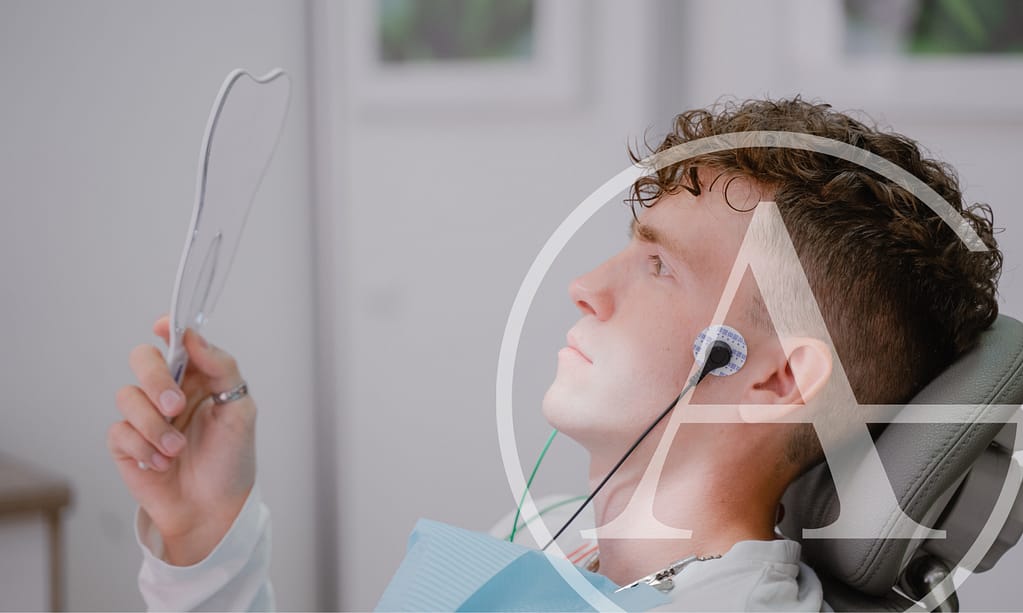What is Neuromuscular Dentistry? Here’s 4 Things You Should Know

Neuromuscular dentistry focuses on relaxing jaw muscles and reducing tension on joints. It’s not just about aesthetics—it’s a thorough approach where teeth, muscles, and joints work together. Dentists aim to improve appearance while safeguarding your chewing system’s overall health, considering the long-term impact of restorative treatments.
What is neuromuscular dentistry?
Neuromuscular dentistry transcends cosmetic improvements, emphasizing a holistic approach to oral health. This method, practiced by neuromuscular dentists, recognizes the interdependence of teeth, jaw joints, and muscles in a well-functioning system. These skilled professionals focus on achieving balance in the bite, aligning the jaw, and ensuring overall comfort.
Neuromuscular dentists, such as Dr. Alhadef at Dallas Cosmetic Dental, understand the connection between teeth, jaw joints, and muscles, all crucial components that need to work together for proper function. In cases of jaw joint misalignment, neuromuscular dentists devise a tailored treatment plan to restore your bite, relieving you from chronic headaches and dental pain.
This nuanced approach to dentistry goes beyond the surface, prioritizing not just the appearance but the comprehensive well-being of your oral system.
Bite Alignment and Systemic Harmony
Achieving optimal bite alignment is a primary focus of neuromuscular dentistry. Severe malocclusion, or misalignment, extends beyond cosmetic concerns, showing up as speech impediments, breathing difficulties, facial changes, bruxism (clenching and grinding), and chewing issues.
A properly aligned bite is more than an aesthetic consideration—it facilitates efficient teeth cleaning, reducing the risk of tooth decay, gingivitis, and other oral health issues. Conversely, severe misalignment can disrupt fundamental functions, such as chewing, speaking, and breathing, affecting physical and psychological health.
Termed “malocclusion” in medical speak, misalignment increases the susceptibility to gum disease and tooth decay (cavities). In essence, neuromuscular dentistry aims for more than just a straight smile; it strives for systemic harmony and overall well-being.
Diagnostic Tools: Precision in Identifying Bite Issues
In neuromuscular dentistry, diagnostic tools are integral to uncovering and addressing bite issues precisely. One such tool is electromyography (EMG), which measures muscle response or electrical activity triggered by nerve stimulation. During this test, small needles, or electrodes, are inserted into the muscles, capturing electrical activity displayed on an oscilloscope.
EMG assesses muscle activity during rest, slight contraction, and forceful contraction, aiding in detecting neuromuscular abnormalities.
Another crucial diagnostic tool is computerized jaw tracking, which meticulously analyzes the relationship between the lower jaw (mandible) and the skull. By affixing a tiny magnet to the lower incisor teeth, this method tracks vertical, anteroposterior, and lateral movements, providing dynamic data. Jaw tracking is instrumental in designing optimal chewing patterns and identifying abnormal functions, contributing to a more accurate diagnosis in neuromuscular dentistry.
Addressing TMJ and Discomfort
Addressing temporomandibular joint (TMJ) disorders and associated discomfort is a core focus of neuromuscular dentistry, offering effective relief. Neuromuscular dentists tackle sensitive and sore teeth linked to TMJ by addressing the root cause—the “bad bite” and misaligned jaw. By identifying and correcting these bite issues, they can alleviate pain without resorting to surgery in most cases.
This approach provides tangible relief and ensures long-lasting results, as patients consistently report sustained pain relief. In the realm of neuromuscular dentistry, the emphasis is on understanding the intricacies of jaw alignment and bite function to mitigate discomfort and enhance overall oral well-being.
Customized Treatment Plans: Personalized Solutions for Patients
In neuromuscular dentistry, crafting a personalized treatment plan is the cornerstone of addressing individual needs. Neuromuscular dentists take on a comprehensive process to correct bite abnormalities, focusing on optimizing jaw positions for the long term. This involves a collaborative effort between patients and dentists, ensuring the treatment plan aligns with the patient’s unique requirements and aspirations.
To rectify bite issues, neuromuscular dentists employ various methods tailored to each patient. These may include custom dental splints, orthodontic devices, or dental restorations. The emphasis is on tailoring the treatment to the specific needs of the individual, acknowledging that a one-size-fits-all approach does not suffice.
Through this personalized approach, patients actively participate in achieving the desired results, fostering a sense of collaboration and commitment to long-term oral health.
Explore neuromuscular dentistry for a healthier smile.
By addressing bite alignment and jaw comfort, neuromuscular dentistry provides comprehensive benefits. Neuromuscular dentists meticulously craft personalized treatment plans, leveraging diagnostic tools and collaborative efforts to correct bite abnormalities. Beyond achieving a mathematically perfect smile, the focus extends to sustained comfort and long-term oral health and well-being.
For those seeking cosmetic improvements and functional benefits, exploring neuromuscular dentistry is prudent. By prioritizing the interplay between the teeth, muscles, and joints, this approach offers lasting relief from discomfort and enhances overall oral health. Discover the transformative potential of neuromuscular dentistry and take the first step towards a healthier, more comfortable smile. If you are experiencing jaw pain or bite issues, schedule a consultation with our expert team at Dallas Cosmetic Dental.